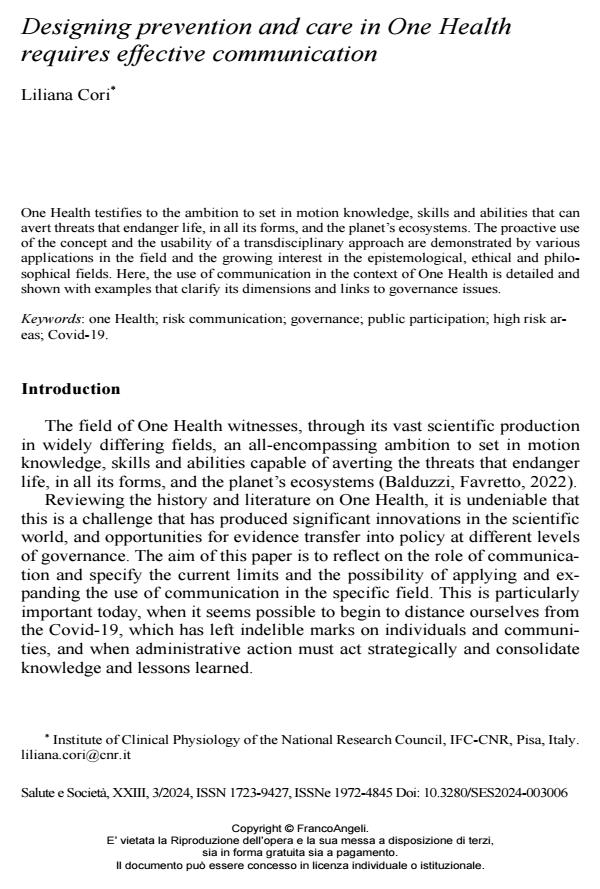Designing prevention and care in One Health requires effective communication
Titolo Rivista SALUTE E SOCIETÀ
Autori/Curatori Liliana Cori
Anno di pubblicazione 2024 Fascicolo 2024/3
Lingua Inglese Numero pagine 15 P. 85-99 Dimensione file 233 KB
DOI 10.3280/SES2024-003006
Il DOI è il codice a barre della proprietà intellettuale: per saperne di più
clicca qui
Qui sotto puoi vedere in anteprima la prima pagina di questo articolo.
Se questo articolo ti interessa, lo puoi acquistare (e scaricare in formato pdf) seguendo le facili indicazioni per acquistare il download credit. Acquista Download Credits per scaricare questo Articolo in formato PDF

FrancoAngeli è membro della Publishers International Linking Association, Inc (PILA)associazione indipendente e non profit per facilitare (attraverso i servizi tecnologici implementati da CrossRef.org) l’accesso degli studiosi ai contenuti digitali nelle pubblicazioni professionali e scientifiche
One Health testifies to the ambition to set in motion knowledge, skills and abilities that can avert threats that endanger life, in all its forms, and the planet’s ecosystems. The proactive use of the concept and the usability of a transdisciplinary approach are demonstrated by various applications in the field and the growing interest in the epistemological, ethical and philosophical fields. Here, the use of communication in the context of One Health is detailed and shown with examples that clarify its dimensions and links to governance issues.
Parole chiave:one Health; risk communication; governance; public participation; high risk areas; Covid-19.
Liliana Cori, Designing prevention and care in One Health requires effective communication in "SALUTE E SOCIETÀ" 3/2024, pp 85-99, DOI: 10.3280/SES2024-003006